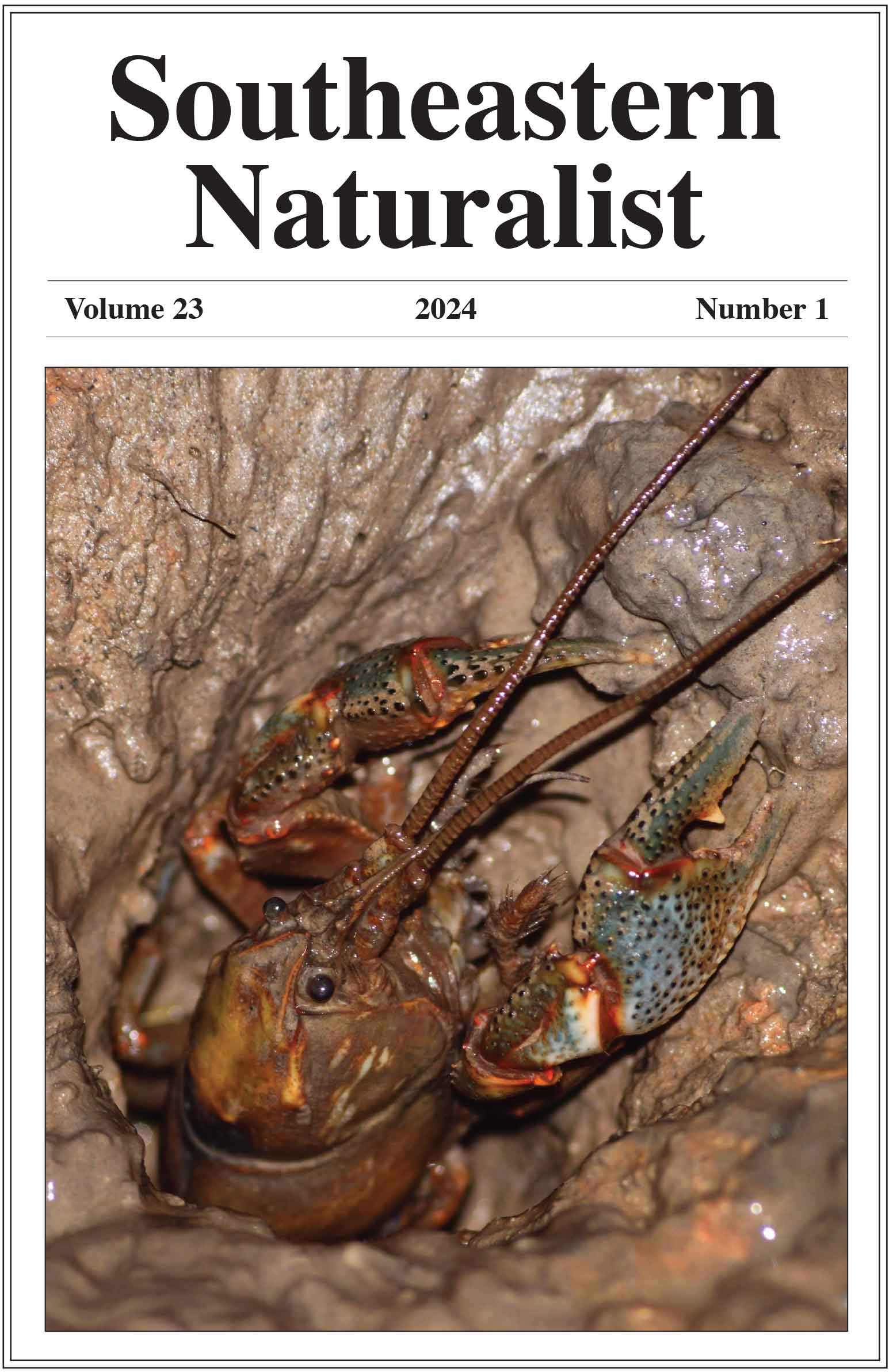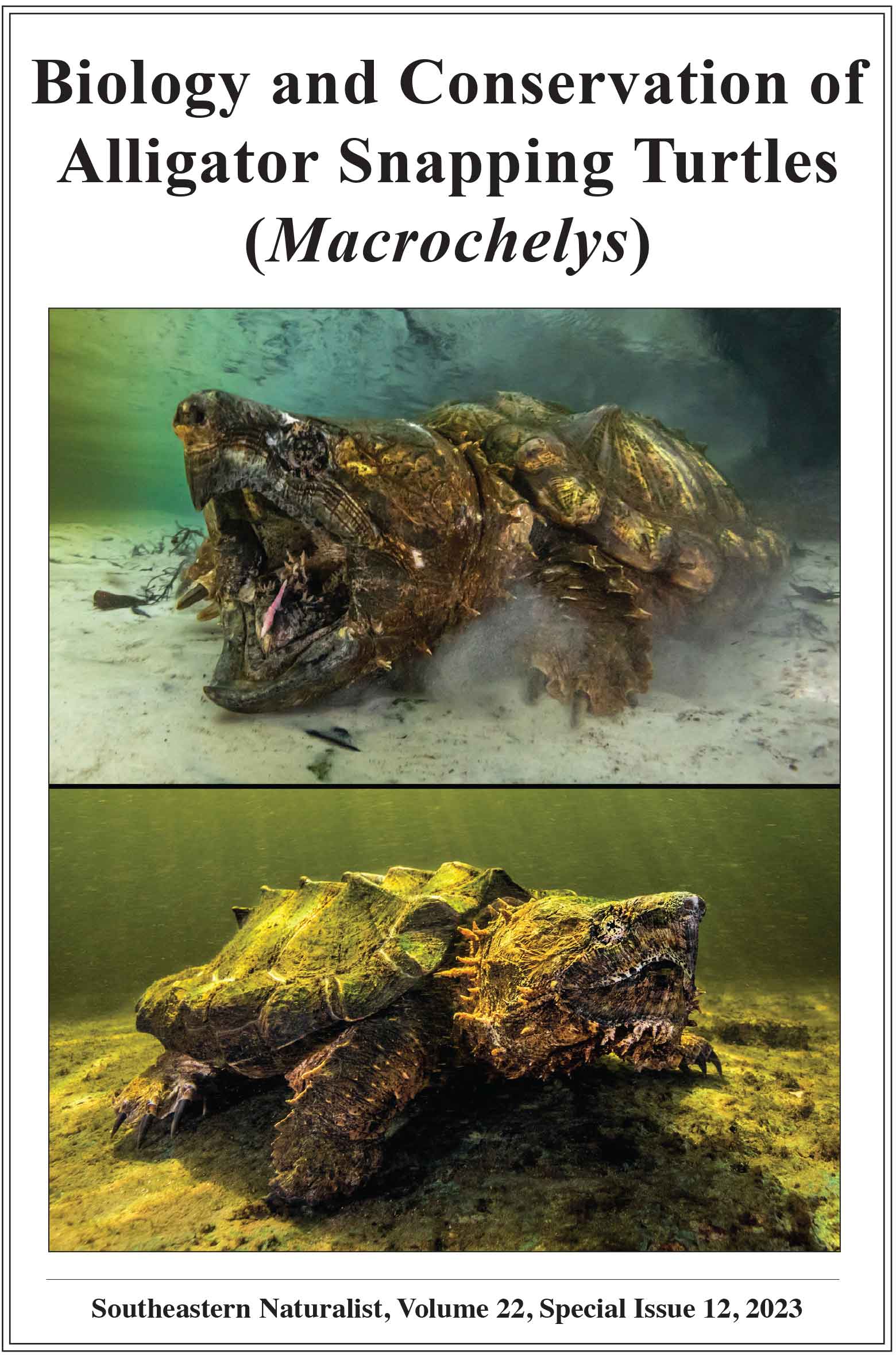Nesting Sites of the Eastern Indigo Snake (Drymarchon couperi) in Georgia
Dirk J. Stevenson1,*, Natalie L. Hyslop2, Chris Layton3, James Godlewski3, and Frankie H. Snow4
1Altamaha Environmental Consulting, Hinesville, GA 31313. 2University of North Georgia, Department of Biology, 3820 Mundy Mill Road, Oakwood, GA 30566. 3DPW-ENRD, Fort Stewart Fish and Wildlife Branch, 1557 Frank Cochran Drive, Building 1137, Fort Stewart, GA 31314. 4South Georgia State College, 100 West College Park Drive, Douglas, GA 31533. *Corresponding author.
Southeastern Naturalist, Volume 20, Issue 2 (2021): 345–352
Abstract
Little is known about the nesting habits of Drymarchon couperi (Eastern Indigo Snake), a federally threatened species native to the Coastal Plain of the southeastern United States. Here, we describe locations of nest sites based on reports in the literature and from our field observations of putative nests and hatched eggshells. All wild nest sites (n = 7) known for the species (i.e., excluding those from translocated and/or captive-bred snakes) have been found in xeric sandhill habitats in southern Georgia and all have been associated with Gopherus polyphemus (Gopher Tortoise) burrows, including in the sand of burrow aprons. To protect snake nests, buffers around tortoise burrows are highly recommended during all habitat management activities (e.g., selective thinning, Pinus palustris [Longleaf Pine] restoration).
![]() Download Full-text pdf (Accessible only to subscribers. To subscribe click here.)
Download Full-text pdf (Accessible only to subscribers. To subscribe click here.)
Access Journal Content
Open access browsing of table of contents and abstract pages. Full text pdfs available for download for subscribers.
Issue-in-Progress: Vol. 23 (2) ... early view
Check out SENA's latest Special Issue:












 The Southeastern Naturalist is a peer-reviewed journal that covers all aspects of natural history within the southeastern United States. We welcome research articles, summary review papers, and observational notes.
The Southeastern Naturalist is a peer-reviewed journal that covers all aspects of natural history within the southeastern United States. We welcome research articles, summary review papers, and observational notes.